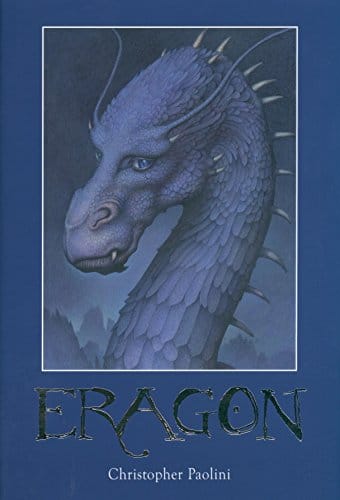Eragon: A Comprehensive Guide to Paolini’s Breakout Fantasy
Explore the magic of Eragon: plot, themes, legacy, and Paolini's world within the Inheritance Cycle. Learn why the novel still enchants fantasy readers.

Introduction to Eragon
Eragon, the debut novel by Christopher Paolini, burst onto the fantasy scene in 2002, introducing readers to a richly imagined world of dragons, magic, and rebellion. The book follows a teenage farm boy whose chance discovery of a mysterious blue stone—soon revealed to be a dragon egg—propels him into an ancient struggle against a tyrannical empire. More than two decades later, Eragon remains a gateway title for young fantasy enthusiasts and a touchstone for discussions about self-publishing success, world-building, and the enduring allure of dragon lore.
The Origins of the Inheritance Cycle
Christopher Paolini penned Eragon when he was just fifteen, drawing inspiration from classic high fantasy such as The Lord of the Rings, Star Wars mythology, and the rugged beauty of his Montana home. Initially self-published and promoted through grassroots efforts—including school visits in medieval garb—the story garnered enough buzz to catch the attention of Alfred A. Knopf. A traditional publishing deal followed, propelling the Inheritance Cycle to international bestseller lists and turning Paolini into one of the youngest authors ever to reach such heights.
The novel’s origin story is nearly as compelling as its narrative, illustrating how passion, persistence, and family support can transform a teenager’s hobby into a global literary phenomenon. Today, aspiring writers often cite Paolini’s journey as proof that unconventional paths to publication can succeed.
Plot Overview: From Farm Boy to Dragon Rider
Eragon opens in the rough terrain of the Spine, where the eponymous protagonist hunts to feed his family. Upon finding a polished blue stone, Eragon unwittingly reawakens the legacy of the Dragon Riders, an ancient order eradicated by the evil King Galbatorix. When the stone hatches into a dragon named Saphira, Eragon bonds with her, unlocking latent magical abilities fueled by the ancient language of Alagaësia.
A brutal attack by the king’s agents forces Eragon and Saphira to flee their village alongside Brom, a storyteller whose secrets prove vital to their survival. Together they traverse deserts, mountain passes, and hidden elven realms, gathering allies such as the Varden rebels and the enigmatic elf Arya. By the climactic Battle of Farthen Dûr, Eragon evolves from a naïve farm boy into a budding warrior willing to confront Galbatorix’s tyranny. Yet the story concludes on a note of unresolved destiny, setting the stage for the sequels Eldest, Brisingr, and Inheritance.
Core Themes and Motifs
Coming of Age
At its heart, Eragon is a bildungsroman. Readers witness Eragon’s transformation as he grapples with new responsibilities, moral dilemmas, and the heavy cost of wielding power. His journey resonates with young adults facing their own rites of passage.
Choice and Free Will
The novel repeatedly asks whether destiny or decision shapes one’s life. Prophecies abound, yet Eragon’s choices—whether to seek revenge, extend mercy, or commit to the Varden—drive the narrative forward, underscoring the power of agency.
Harmony with Nature
From Saphira’s deep connection to the land to the elves’ eco-centric culture, Eragon advocates environmental stewardship. Magic in Alagaësia is often portrayed as a natural force, reinforcing the idea that balance with the environment yields strength.
Friendship and Loyalty
The bond between dragon and rider is paramount, symbolizing mutual trust and sacrifice. The camaraderie among rebels further highlights the importance of unity in the face of oppression.
Cultural Impact and Legacy
Eragon sold over 25 million copies worldwide, revitalizing interest in dragon-centric fantasy for young readers. Its success paved the way for other teen authors and encouraged publishers to scout talent outside traditional channels. The novel also fostered a vibrant online fandom that trades theories, fan art, and role-playing scenarios—keeping Alagaësia alive between official releases.
Academically, Eragon has become a staple in middle-school classrooms, where educators use it to discuss hero’s-journey structure, constructed languages, and world-building techniques. Paolini’s clear prose and relatable protagonist make the book an accessible entry point for reluctant readers while still offering depth for literary analysis.
The Film Adaptation Controversy
In 2006, 20th Century Fox released a film adaptation of Eragon starring Edward Speleers, Jeremy Irons, and Rachel Weisz as the voice of Saphira. While the movie introduced the franchise to a broader audience, it faced criticism for condensing key plotlines, altering character arcs, and employing underwhelming visual effects compared with genre contemporaries. Fans lamented the omission of crucial lore, and critics found the screenplay derivative.
Despite its box-office earnings, the lukewarm reception halted plans for sequels. Nevertheless, recent streaming platforms have reignited interest in adapting the entire Inheritance Cycle, fueled by online petitions and Paolini’s stated enthusiasm for a faithful retelling.
Why Eragon Still Matters Today
Eragon endures because it captures universal experiences—growth, courage, and the search for identity—within an imaginative framework rich with dragons, ancient languages, and political intrigue. Its accessible narrative invites newcomers to fantasy while rewarding seasoned genre fans with deep lore and expansive geography.
The novel also exemplifies how diverse publishing models can coexist. Paolini’s transition from self-publishing to mainstream success challenges assumptions about industry gatekeeping and inspires modern indie authors leveraging digital platforms. Moreover, Eragon encourages ecological mindfulness and ethical leadership, themes increasingly relevant in a world grappling with climate change and social upheaval.
As new readers discover Alagaësia and longtime fans await further adaptations, Eragon’s legacy shows no signs of fading. Whether you’re revisiting the tale or embarking on the journey for the first time, the bond between Eragon and Saphira continues to spark the imagination—and reminds us that even the most unassuming individuals can shape the fate of their worlds.



